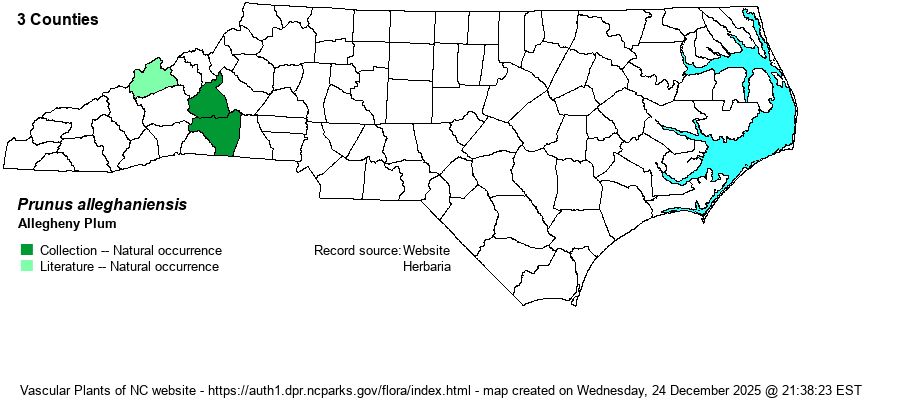| Author | Porter | |
| Distribution | Known for certain (specimens) only from a few sites in the Piedmont foothills (South Mountains area); likely is present very sparingly in the northern Mountains and foothills. A recent photo on iNaturalist from Madison County appears to be correct, and the site listed is a high pH one. A few additional collections in SERNEC have not been corroborated. Nearly all of these records have been made since about 2007; it was not noted for NC in RAB (1968).
This Northern species has quite a small overall range, from southern CT and MI south mainly in the mountains to western VA, and sparingly into western NC.
| |
| Abundance | Very rare in NC, though in the Box Creek area of the western South Mountains (or more precisely, the saddle between these mountains and the Blue Ridge) it can be locally fairly common. This is an NC Significantly Rare species. | |
| Habitat | In NC, it appears to be restricted to rocky outcrops and glades over high pH (mafic) rocks. |
| Phenology | Blooms in April and May, and fruits in August and September. | |
| Identification | Only a very few biologists have seen this species in the state, and mostly those who have received permission to visit the privately owned Box Creek area in the South Mountains. This is a large shrub or very small deciduous tree, reaching only to about 15 feet tall, usually lower; it can have a straggling form and grow in thickets. Its leaves are lanceolate (wider near the base) to nearly elliptic, and sharply but minutely serrate. It has rather small white flowers about 1/2-inch across. Most importantly, it has purple or dark purple, rounded fruits about 1/2-inch across, which distinguish it from nearly all other woody Rose family species. If the fruits are not visible, it can be easily confused with Hog Plum (P. umbellata), though that species occurs lower in elevation in the foothills and Piedmont, does not occur in strongly circumneutral/basic soils, usually occurs singly and not in clumps, and is normally a small tree and not a straggly shrub. | |
| Taxonomic Comments | Generally few if any taxonomic problems, though several references, including both Weakley (2018) and NatureServe, list varieties for it. The one occurring in NC is the nominate form – P. alleghaniensis var. alleghaniensis.
| |
| Other Common Name(s) | Allegheny Sloe. Note that the specific name is spelled with an “a”, and the common name with an “e” – Allegheny. | |
| State Rank | S1 | |
| Global Rank | G4 | |
| State Status | [SR-T] | |
| US Status | | |
| USACE-agcp | | |
| USACE-emp | | |

